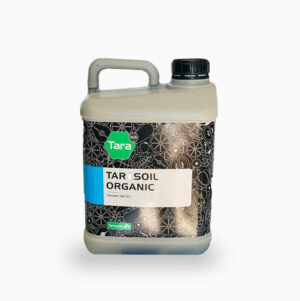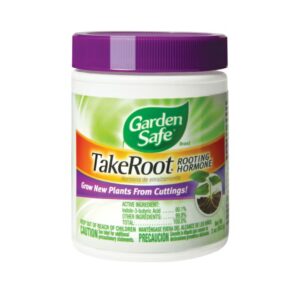Great White®
د.إ95.00 – د.إ245.00نطاق السعر: من د.إ95.00 خلال د.إ245.00
| الوزن | غير محدد |
|---|---|
| Size | 30 grams ,113 grams |
Great White is a cutting-edge formula containing a highly concentrated and diverse blend of beneficial microbes. Best for hydroponic systems and can also be used in soil, coco and in brewing compost teas.
The endo and ecto mycorrhiza, beneficial bacteria and trichoderma build a microbial system in and on plant roots which enhance water and nutrient uptake. Great White can be used in hydroponics, field agriculture or home gardening. It is best used as a seed coat or in the early stages of growth. Users should look for vibrant and vigorous plants. Great White is used by professional and home growers for its quality, consistency and proven results.
How To Use:
Seeds: Lightly dust with Great White. Or, roll seeds in Great White® powder at any time in the germinating process.
Cuttings: Mix into pre-soak/fertilizer solution at a rate of 1 scoop (1tsp or 5 grams) per 2 gallons (10 litres) of water. Soak rooting media (cubes) in Great White® solution at ½ tsp (3 g) per gallon of water for up to 24 hours before taking cuttings. Alternatively you can dip your cuttings directly into the Great White® powder after dipping into your rooting hormone.
Transplanting: When transplanting fully rooted cuttings, lightly dust planting hole with Great White® powder and place roots directly on top.
Soil, Coco and Top feeding: Apply at a rate of 1 scoop (1 tsp or 5 grams) per 2 gallons (10 litres) of water.
Hydroponics: Mix into reservoir with regular feeding at a rate of 1 scoop (1 tsp or 5 grams) per 10 gallons (40 litres) of water. Hydroponic users may find settling or particles on bottom of reservoir and should not be concerned of product loss; it’s normal for the carrying agent to settle.
Ingredients:
Endomycorrhiza
Glomus aggregatum – 83 props per gram
Glomus intraradices – 83 props per gram
Glomus mosseae – 83 props per gram
Glomus etunicatum – 83 props per gram
Glomus clarum – 11 props per gram
Glomus monosporum – 11 props per gram
Paraglomus brazilianum – 11 props per gram
Glomus deserticola – 11 props per gram
Gigaspora margarita – 11 props per gram
Ectomycorrhiza
Pisolithus tinctorious – 187,875 propagules per gram
Rhizopogon luteolus – 5,219 props per gram
Rhizopogon fulvigleba – 5,219 props per gram
Rhizopogon villosullus – 5,219 props per gram
Rhizopogon amylopogon – 5,219 props per gram
Scleroderma citrinum – 5,219 props per gram
Scleroderma cepa – 5,219 props per gram
Bacteria
Azotobacter chroococcum – 525,000 CFU’s per gram
Bacillus subtilis – 525,000 CFU’s per gram
Bacillus licheniformis – 525,000 CFU’s per gram
Bacillus azotoformans – 525,000 CFU’s per gram
Bacillus megaterium – 525,000 CFU’s per gram
Bacillus coagulans – 525,000 CFU’s per gram
Bacillus pumilus – 525,000 CFU’s per gram
Bacillus amyloliquefaciens – 525,000 CFU’s per gram
Paenibacillus durum – 525,000 CFU’s per gram
Paenibacillus polymyxa – 525,000 CFU’s per gram
Saccharomyces cerevisiae – 525,000 CFU’s per gram
Pseudomonas aureofaciens – 525,000 CFU’s per gram
Pseudomonas fluorescens – 525,000 CFU’s per gram
Trichoderma koningii-187,875 CFU’s per gram
Trichoderma harzianum-125,250 CFU’s per gram











